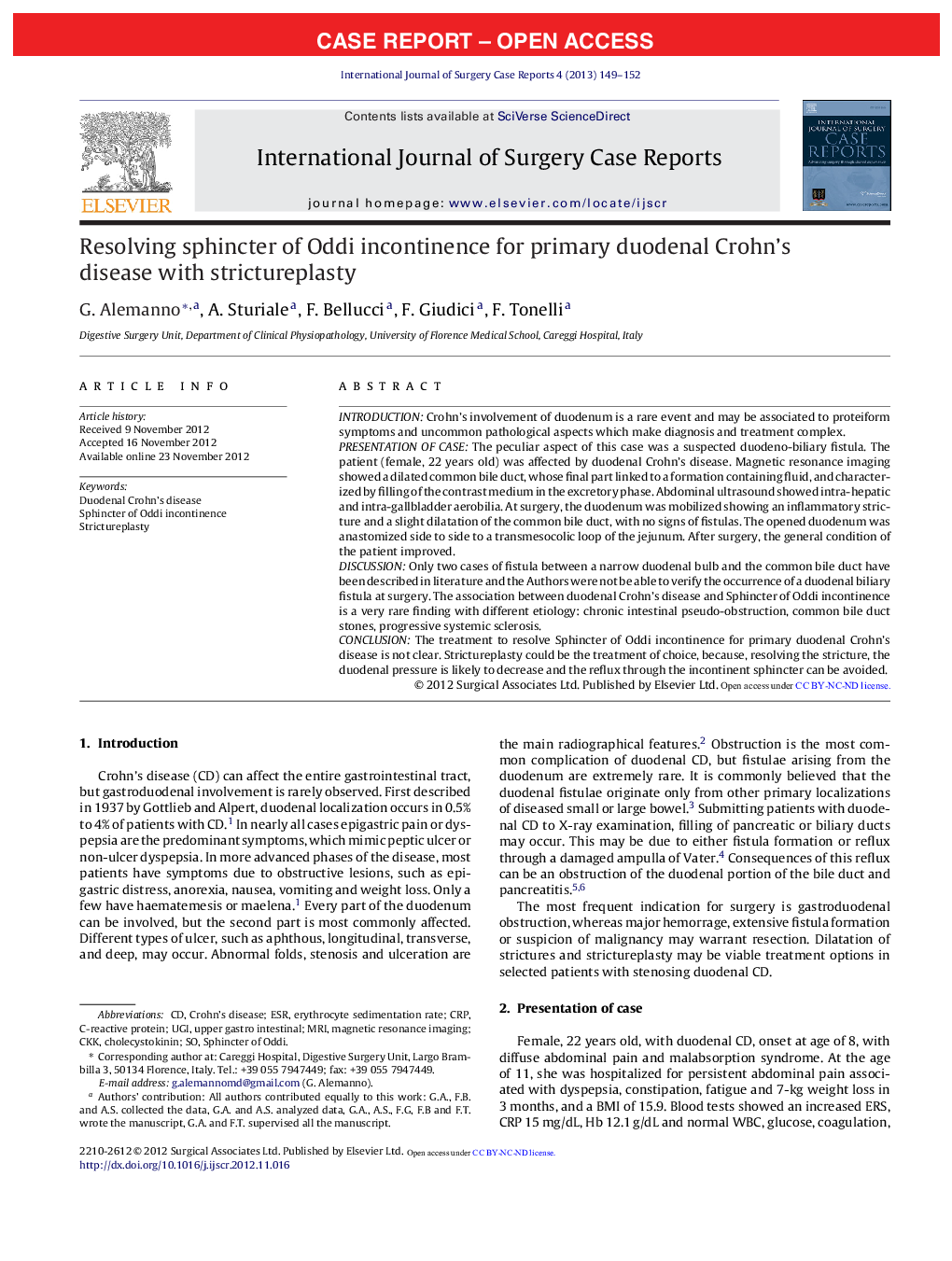| Article ID | Journal | Published Year | Pages | File Type |
|---|---|---|---|---|
| 4290141 | International Journal of Surgery Case Reports | 2013 | 4 Pages |
INTRODUCTIONCrohn's involvement of duodenum is a rare event and may be associated to proteiform symptoms and uncommon pathological aspects which make diagnosis and treatment complex.PRESENTATION OF CASEThe peculiar aspect of this case was a suspected duodeno-biliary fistula. The patient (female, 22 years old) was affected by duodenal Crohn's disease. Magnetic resonance imaging showed a dilated common bile duct, whose final part linked to a formation containing fluid, and characterized by filling of the contrast medium in the excretory phase. Abdominal ultrasound showed intra-hepatic and intra-gallbladder aerobilia. At surgery, the duodenum was mobilized showing an inflammatory stricture and a slight dilatation of the common bile duct, with no signs of fistulas. The opened duodenum was anastomized side to side to a transmesocolic loop of the jejunum. After surgery, the general condition of the patient improved.DISCUSSIONOnly two cases of fistula between a narrow duodenal bulb and the common bile duct have been described in literature and the Authors were not be able to verify the occurrence of a duodenal biliary fistula at surgery. The association between duodenal Crohn's disease and Sphincter of Oddi incontinence is a very rare finding with different etiology: chronic intestinal pseudo-obstruction, common bile duct stones, progressive systemic sclerosis.CONCLUSIONThe treatment to resolve Sphincter of Oddi incontinence for primary duodenal Crohn's disease is not clear. Strictureplasty could be the treatment of choice, because, resolving the stricture, the duodenal pressure is likely to decrease and the reflux through the incontinent sphincter can be avoided.
